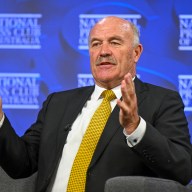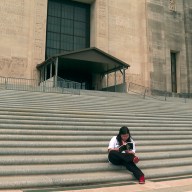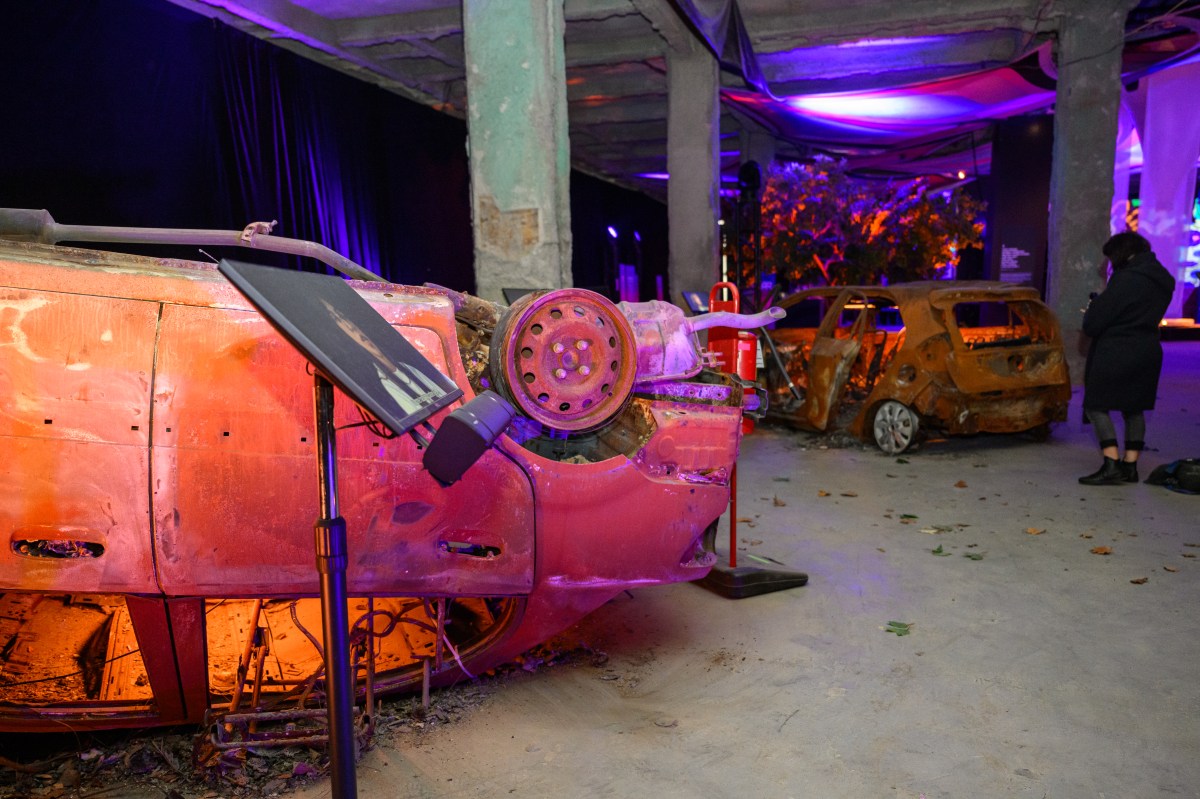 Willem Dafoe attends the New York Film Festival.
Willem Dafoe attends the New York Film Festival.
Credit: Getty Images
Willem Dafoe is a character actor, which means he does everything. He’s been a superhero villain (“Spider-Man”), he’s been Jesus (“The Last Temptation of Christ”); he’s done lit adaptations (“The English Patient”), he’s done a Lars Von Trier horror movie (“Antichrist”); he’s been Oscar-nominated (“Platoon,” “Shadow of the Vampire”), he’s been Razzie-nomianted (“Body of Evidence”). This year alone he’s been in a Wes Anderson film (“The Grand Budapest Hotel”), a YA movie (“The Fault in Our Stars”) and played a famous director (in Abel Ferrara’s “Pasolini,” which is still looking for an American distributor). And now there’s “John Wick,” an action movie in which he plays an assassin asked to take out an old colleague (Keanu Reeves), who’s on a rampage.
You’re a serious actor — one of the earliest members of the experimental theater company The Wooster Group — who has never been above action movies.
I like doing action sequences. It’s fun because it’s athletic and really requires timing, a correct touch. I’m always open to action sequences, they’re very particular. It’s what I like about performing, which is that you have a strong action. I often refer to myself as a task-oriented actor. That’s very much where my training in theater comes from. You have a very clear sequence of movements. You have to learn the sequence, you have to rehearse it. You get totally engaged and totally turned on. You have to keep a balance. If you don’t throw yourself into it, it becomes mechanical and dry. If you throw yourself too much into it, people get hurt. It’s an archetypal performance test because it’s very concrete.
Your and Reeves’ characters have known each other for a very long time. Did you bother with a backstory?
I don’t find backstory very useful. You can’t play backstory. It can guide research. But I don’t like that kind of stuff. I almost find it distracting, showy. I like to play what’s in the scenes, have stuff occur to me. I like to pretend, and when I’m pretending certain things come up. But backstory, no.
There’s that Spencer Tracy line: Know your lines and don’t run into the furniture.
That’s a little too glib for me. It really is. When I talk about the kind of things I’m experiencing rather than interpreting. It’s a subtle thing, and sometimes people misunderstand me. It’s not a lack of will or interest or research or depth — it’s just a different way of acting. I’m not telling the audience anything. I’m pretending in a situation and things happen to me. And in my reactions and in my dealing with situations, with me being in the guise of a character, that will speak to the audience. My concentration is trying to find the truth or the magic or interesting things in dealing with a situation.
Tracy was probably joking anyway.
It’s true. When I say it’s glib I mean everyone uses that to mean straight-shooting actors who just get up there and do it. But even with those guys there’s something special happening.
 Willem Dafoe plays an assassin colleague to Keanu Reeves in “John Wick.”
Willem Dafoe plays an assassin colleague to Keanu Reeves in “John Wick.”
Credit: David Lee
You were introduced to Reeves a long time ago by Kathryn Bigelow, who directed him in “Point Break.” She directed you in her first feature, “The Loveless.”
That movie was really fun. It was the first lead role I had. It was a low budget movie. We were all starting out. The response to it is mixed. It’s a slight movie, but it’s very particular. And it was great fun to do.
Bigelow is thought of as an action and thriller director, but her school thesis film was a deconstruction of humankind’s draw to onscreen violence.
She was a semiotics gal. Douglas Sirk was talked about a lot when we were making it. She was interested in not only the language of film but in the symbols of film, and playing with archetypes. Some people misidentified the film as a modern “The Wild One.” It isn’t at all. It was a study of the fetish of the surface of this motorcycle gang. It was a lot about belts and boots and bulges.
You have one of the higher number of onscreen deaths, with at least 12 — as many as Sean Bean does. Is this true?
I think without a doubt. I don’t know anybody who dies nearly as much as I do.
Is there something that draws you to that?
It’s nice to have a good exit. Death is so dramatic. The subject doesn’t necessarily attract me, but it does say something about what kinds of characters I’m attracted to and what things happen in the movies I do. Death is big on my list of things to do, when I’m ready. [Laughs]
Are you a death obsessee?
I think you’re a fool if you aren’t.
Do you have a secret to a great onscreen death?
You just do it as gracefully and elegantly as you can.
Read our interview with Dafoe (and director Abel Ferrara) about “Pasolini,” which just played the New York Film Festival.
Follow Matt Prigge on Twitter @mattprigge
















